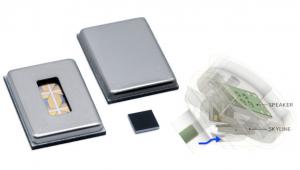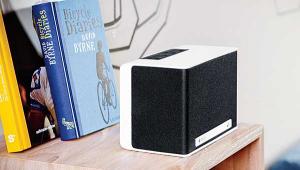Face Off: Surround-Speaker-Configuration Wars Page 4
The results of this Face Off were, at times, distinct and consistent and, at times, more ambivalent. We spent the better part of a day changing speaker configurations, calibrating levels, and listening to various movie and music clips. We could've spent even more time comparing even more movie soundtracks and music cuts with either direct- or dipole-radiating side/rear surround speakers. We could've also experimented with the use of bipole speakers, which are like dipoles without the null area, and tripole speakers, a hybrid of direct- and dipole-radiating speakers. We could've ultimately spent months studying varying conditions with varying placement options with varying sound levels, ad infinitum. Maybe someone can apply for a government grant to study this; God only knows what other random studies our taxes are paying for these days.
That being said, the panel seemed to agree that dual rear speakers was the way to go. No one on the panel said otherwise. Although it might be tempting to just buy one center speaker for the rear channel, since there's only one channel of information, you'll get a fuller effect from dual speakers. This coincides with the fact that theaters use at least two (if not more) speakers for the rear-channel array. The next assumption could be that the rear channel should be dipole in nature, regardless of the side channels. Most of the panel felt that dipoles were useful in at least one of the two (rear or side) locations. I would argue a preference for the surround back channel, given the tendency for surround back sounds to give in to the Precedence Effect. Whether or not you use dipole surrounds to the side in conjunction with dipoles to the rear seems to be a matter of preference. Movie nuts who watch mostly action films with predominantly discrete surround or rear-channel effects or music fans who like 5.1 recordings that place discrete instruments in the rear channels should definitely audition direct-radiating loudspeakers for the surround channels. Film and music buffs who like the rear channel to be more ambient in nature and want to focus on the action or soundstage up front should look more toward dipole speakers. Or, as John put it, you could buy the M&K speakers and, with a little effort, have both.
Testing System
Lexicon MC-1 pre/pro,
Parasound HCA-1205A amp,
B&K Reference 4430 amp,
B&K Reference 4420 amp,
Panasonic CT-34WDM60 TV,
Toshiba SD-9100 DVD player,
M&K S-150P THX LCR speakers,
M&K MX-350 THX sub,
M&K Surround-250 speakers
HT Labs Measures: M&K Surround-250 Speaker 
This graph shows the in-room averaged frequency response of the Surround-250 surround channel in dipole mode (red) and in tripole mode (magenta). In-room averaged response in dipole mode measures +4/-14 decibels from 200 hertz to 10 kilohertz. In tripole mode, response is +2/-8 dB from 200 Hz to 10 kHz. The -3dB point is at 92 Hz. Impedance reaches a minimum of 3.59 ohms at 150 Hz in dipole mode and 3.83 ohms at 150 Hz in tripole mode. Sensitivity is 85.5 dB from 500 Hz to 2 kHz, measured at a distance of 1 meter on the listening axis with 2.83 volts input.—AJ
Dipole Measurements 
The above chart shows the frequency response of the M&K Surround-250 in the dipole-radiating mode. Place the speaker in this mode by removing the jumper from speaker terminals 3 and 4 and leaving only the amplifier signal leads connected to the speaker's + and - terminals (1 and 2), as indicated in the speaker's manual and on the back panel. In dipole mode, response is +4/-14 dB from 200 Hz to 10 kHz. Impedance measures 3.59 ohms at 150 Hz.—AJ
Monopole Measurements 
The above chart shows the M&K Surround-250 in direct-radiating mode. To place the speaker in monopole mode, you must violate the instructions by rearranging the jumper and amplifier leads. Under no circumstances should you connect the jumper to any binding post that is also connected to your amplifier; you will damage the amp. First, remove all connections to the speaker, including the gold-plated jumpers that can be found on binding posts 3 and 4. Next, connect your amplifier's + signal to post 3 and the - signal to post 4. Then, connect the jumper to the + and - speaker connections, labeled 1 and 2—again, do this only if there are no other connections on these terminals. In-room averaged response in monopole mode measures +2/-2.5 dB from 200 Hz to 10 kHz, with impedance reaching a minimum of 4.8 ohms at 59 Hz.—AJ
- Log in or register to post comments



















































